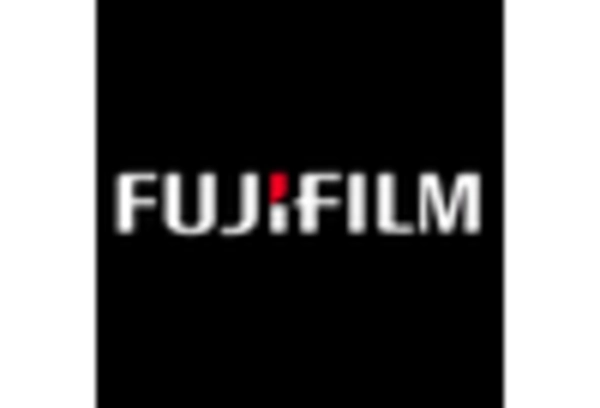Expansion of Point-of-Care Testing
The ultrasound devices market is significantly influenced by the expansion of point-of-care (POC) testing. This trend is characterized by the increasing use of portable ultrasound devices in various healthcare settings, including emergency rooms, outpatient clinics, and even home care. The convenience and immediacy of POC testing are appealing to both healthcare providers and patients. In the US, the market for POC ultrasound devices is expected to reach approximately $1.5 billion by 2026, reflecting a growing preference for rapid diagnostic solutions. This expansion is likely to drive innovation in ultrasound technology, leading to the development of more compact and user-friendly devices that cater to the needs of healthcare professionals in diverse environments.
Rising Demand for Non-Invasive Procedures
The ultrasound devices market is experiencing a notable increase in demand for non-invasive diagnostic procedures. This trend is largely driven by the growing awareness among patients and healthcare providers regarding the benefits of non-invasive techniques. Ultrasound technology offers a safe and effective alternative to more invasive procedures, which can carry higher risks and longer recovery times. In the US, the market for non-invasive imaging is projected to grow at a CAGR of approximately 6.5% over the next few years. This shift towards non-invasive methods is likely to enhance the adoption of ultrasound devices, as they provide real-time imaging without the need for ionizing radiation, making them a preferred choice in various medical applications.
Aging Population and Chronic Disease Prevalence
The ultrasound devices market is propelled by the aging population and the rising prevalence of chronic diseases. As the US population ages, there is an increasing demand for diagnostic imaging services to monitor and manage age-related health issues. Chronic conditions such as cardiovascular diseases, diabetes, and cancer require regular monitoring, which often involves ultrasound imaging. According to recent statistics, the number of individuals aged 65 and older is projected to reach 80 million by 2040, significantly impacting the demand for ultrasound devices. This demographic shift suggests a sustained growth trajectory for the ultrasound devices market, as healthcare systems adapt to meet the needs of an older population.
Government Initiatives and Funding for Healthcare
The ultrasound devices market is positively impacted by various government initiatives and funding aimed at improving healthcare access and quality. In the US, federal and state programs are increasingly investing in advanced medical technologies, including ultrasound devices, to enhance diagnostic capabilities in underserved areas. These initiatives often focus on expanding access to healthcare services, particularly in rural and low-income communities. As a result, the ultrasound devices market is expected to benefit from increased funding and support for the adoption of innovative imaging technologies. This trend may lead to a broader distribution of ultrasound devices across diverse healthcare settings, ultimately improving patient outcomes and driving market growth.
Integration of Artificial Intelligence in Imaging
The ultrasound devices market is witnessing a transformative phase with the integration of artificial intelligence (AI) in imaging technologies. AI algorithms are being developed to enhance image quality, automate measurements, and assist in diagnostic decision-making. This integration not only improves the accuracy of ultrasound imaging but also streamlines workflow in clinical settings. In the US, the adoption of AI-driven ultrasound devices is expected to increase, with market analysts predicting a growth rate of around 8% annually over the next five years. The potential for AI to reduce the time required for image interpretation and increase diagnostic confidence is likely to drive further investment in ultrasound technology, thereby expanding the market.

















Leave a Comment